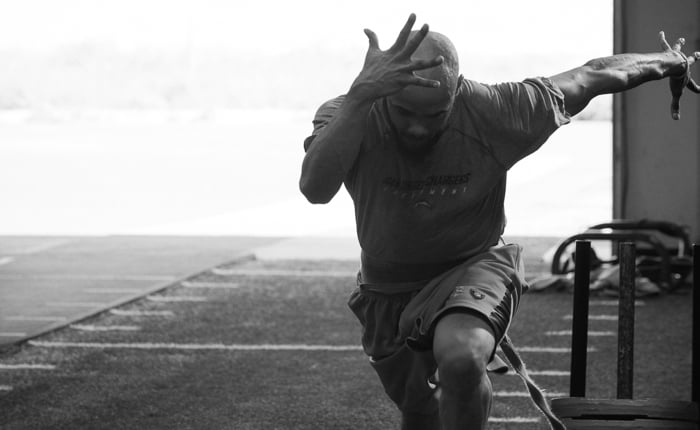
I spent spring training working with a MLB coaching staff, and they are changing some of the paradigms in baseball, particularly related to pitchers by eliminating long distance running from their programs. Long distance running has long been a staple of a pitchers “recovery”, and has mindlessly been included in their program and others based on false physiologic mechanisms (the “flush run”). The fact is that long distance running hurts pitchers performance. The only positive thing about it is that it is easy to create a quantifiable goal— run x amount out in y amount of time.
This MLB team has replaced long distance running with repeated sprint workouts and other repeated anaerobic efforts like resisted sled dragging. Both of these movements are great alternatives to recovery and development. The best way to recover is often over complicated, and simply lowering running volumes give the athletes more time to recover from their sport and training, lowering injuries from overuse. From a developmental benefit, we previously discussed the added benefit of resisted sled drags, creating leg and torso angles that reinforce the body positioning found in healthy sprint mechanics.
After replacing a superior physiological replacement, finding a better biomechanical solution is the next key. So the way we bring the quantifiable benefit of long distance running into these alternative exercises is by counting steps on resisted sled drag. Being mindful of steps can both focus the athlete on the task at hand and encourage consistency by setting goals. The goal can be tricky, as we have 3 variables on a sled drag; distance, # of steps taken, and the weight of sled resistance. Due to variations in surface and temperature (different friction), they set the weight of sled for a team’s environment by finding the resistance needed for taking 5 steps with each leg to travel around 10 total yards.
The ensuing goal is travel more distance in the same amount of steps with the same weight. Keeping the weight and number of steps fixed, allows us to simplify our statistical correlations with exercises and outcomes, but most importantly, allows the athlete to focus on one mechanic. Athletes focus on pushing the ground for full leg extension so they learn to punch horizontally to move forward rather than focusing on pulling, which can create bad habits (like butt kicking when jogging). Below is a video of our coaching staff prescribing and focusing on resisted marching, counting steps both on the sled and during video analysis.
One of true arts of coaching is selecting “bulletproof movements”, and thankfully moving the sled as far as the athlete can in 5 steps cannot be done well by reaching. The proper mechanics will create better angles of force transmission into the ground, which moves the sled further in those prescribed reps.